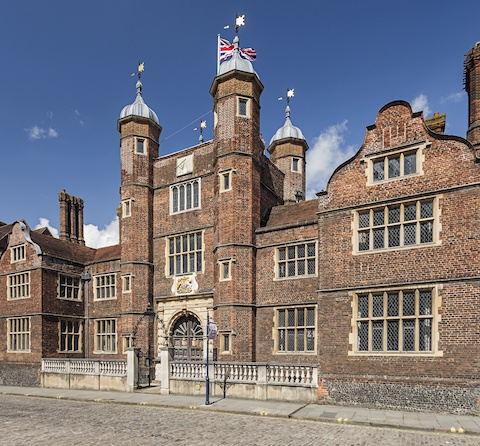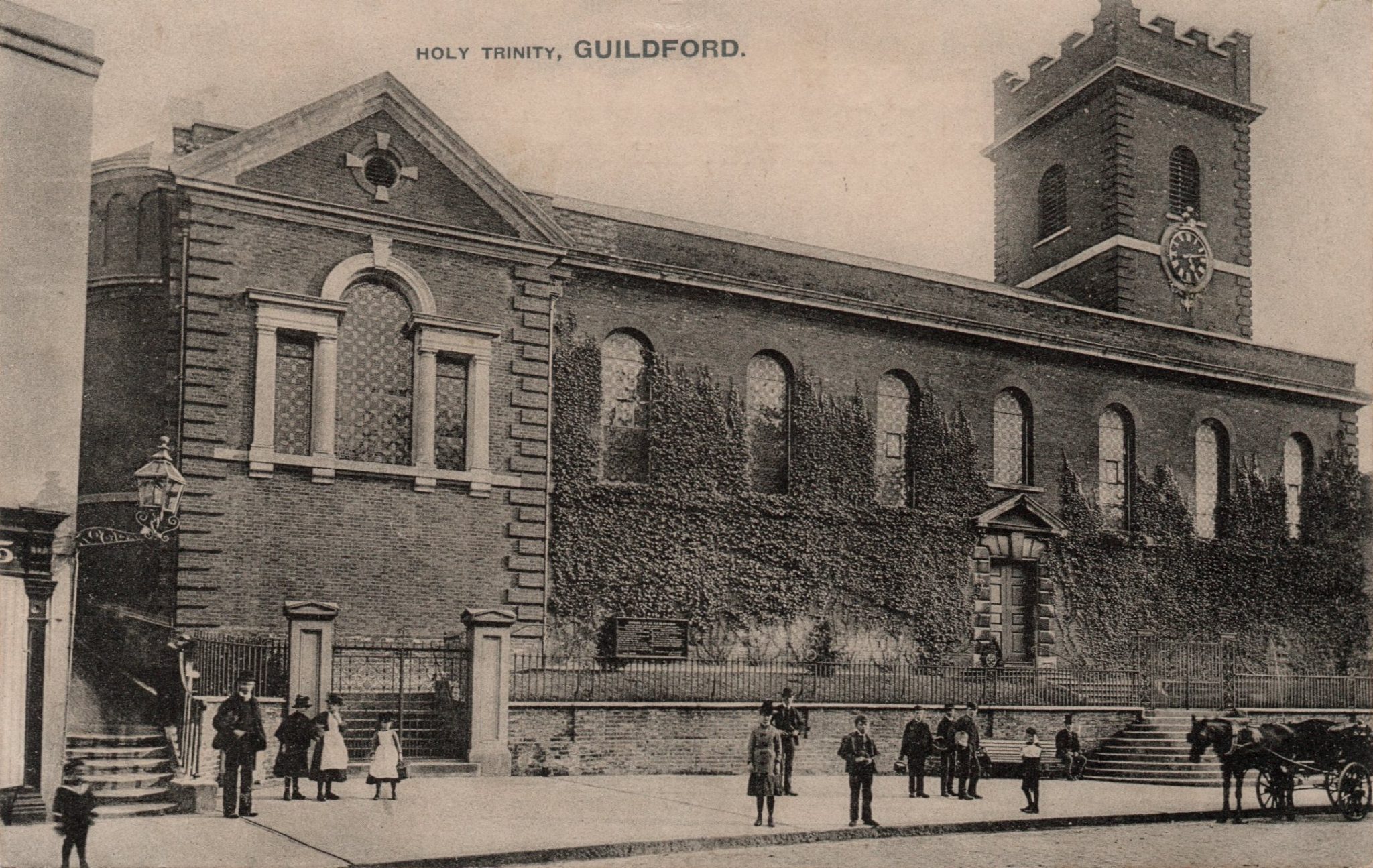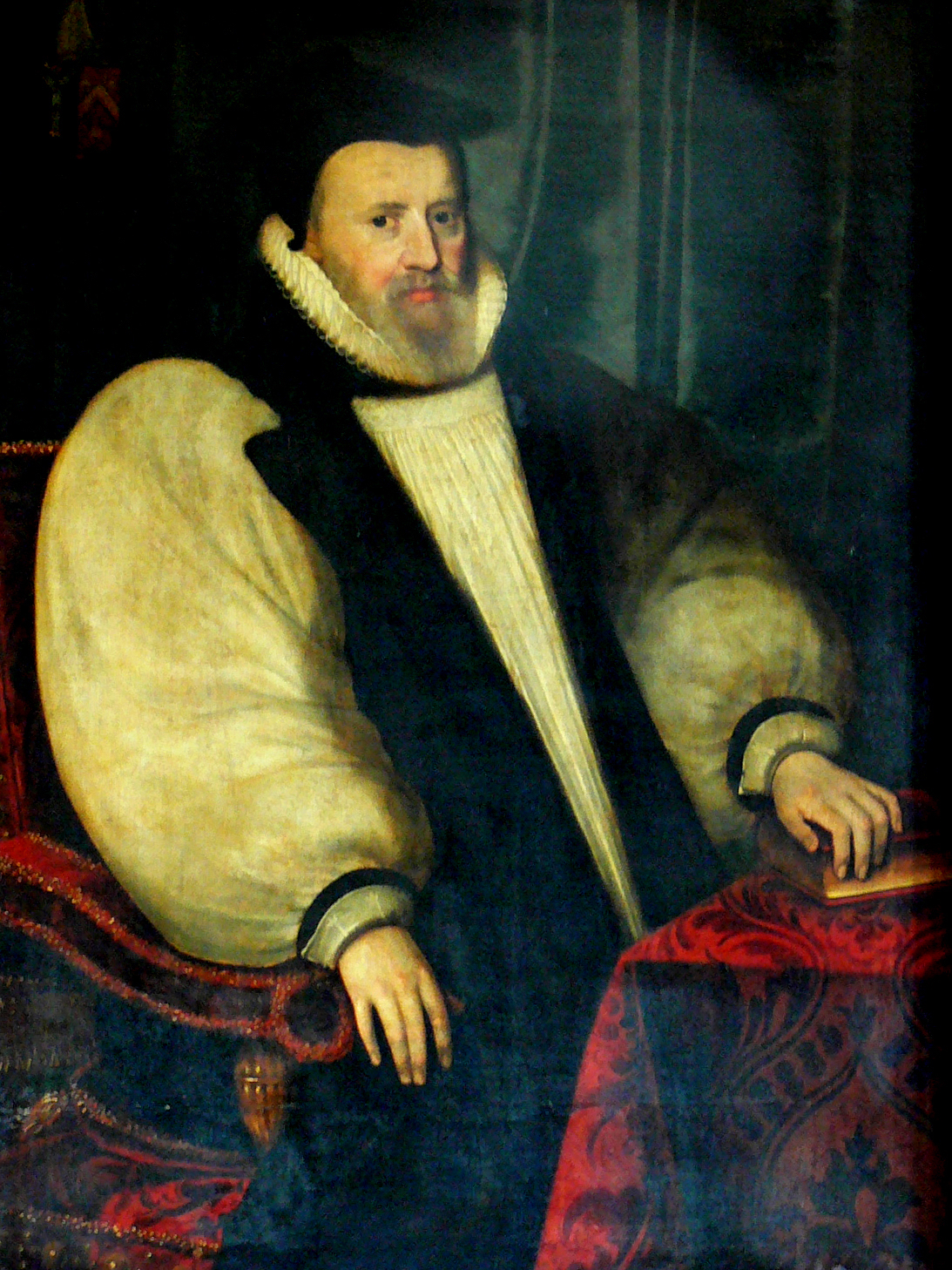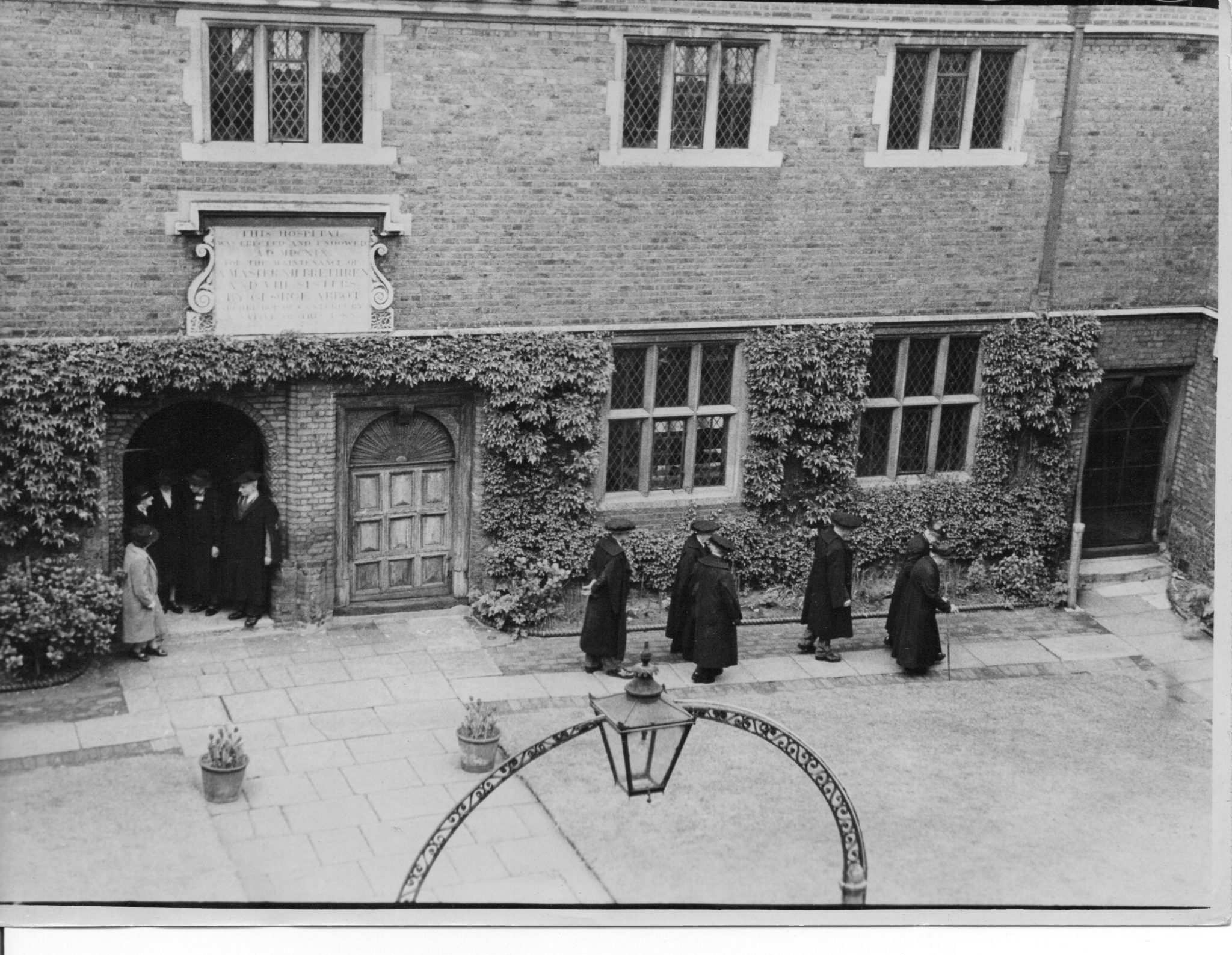 Abraham Lincoln
If given the truth, the people can be depended upon to meet any national crisis...
Abraham Lincoln
If given the truth, the people can be depended upon to meet any national crisis...
 Guildford news...
for Guildford people, brought to you by Guildford reporters - Guildford's own news service
Guildford news...
for Guildford people, brought to you by Guildford reporters - Guildford's own news service
Looking Back As Abbot’s Hospital Has Celebrated Its 400th Anniversary
Published on: 21 Nov, 2019
Updated on: 25 Nov, 2019
By Dr Mary Alexander
This summer Abbot’s Hospital has been celebrating the 400th anniversary of its foundation by George Abbot, a native of Guildford, who became Archbishop of Canterbury.

The Hospital of the Blessed Trinity (Abbot’s Hospital) today.
The festivities ended on Sunday, November 17 with a special Evensong in Holy Trinity Church.
Holy Trinity has always been closely involved with the hospital. The rector was one of the five men who appointed the Master of the Hospital, it was dedicated to the Trinity, and on three days a week all the residents had to process two-by-two over the road for morning and evening prayer in the church.
George Abbot (1562-1633) founded the almshouse with people like his parents in mind – people who had ‘honestly laboured’ and especially those who had been tradesmen and employed others, like his father.
Drunkards, brawlers and those who had begged from door to door were specifically excluded.
There was already provision for them at the old leper hospital, or in parish almshouses, but people of the tradesman class didn’t have such a safety net.
We have no idea if Abbot’s parents fell on hard times in their old age, but George wanted to help those who had, and who had helped the town during their working lives.
There were to be 12 men and eight women, aged 60 or more, and unmarried. Was George thinking of his own bachelor state?
In fact, this was unrealistic as most people married, and the residents were almost all widows or widowers.
It was on April 6, 1619 that George Abbot laid the first stone.
Six brother and four sisters were admitted at first, and it took a few years to get the full complement.
Of the men, George Burges was a glazier, Gregory Frye a butcher and Robert Kitchener a shearman (finishing woollen cloth).
Richard Butcher’s and John Rapley’s trades are not known, but all the men had been married with children.
Richard Pardey was still married, but because he had served Abbot’s parents he was given the weekly allowance, and lived outside the hospital.
The women were all widows. Incidentally, when they were buried the parish clerk often left a blank for the women’s Christian name in the register – clearly they were called Widow Rapley, or Widow Heath etc during their life, whereas the men were called by their full name.
The residents were given a weekly allowance, their room and food, and a thick woollen gown every two years. This would be a welcome warm outer garment.
Coal or charcoal was also provided, and four celebrations a year at Christmas, Easter, Whitsun and the Founder’s birthday, October 29.
There was a garden at the back where fruit and vegetables were grown.
It is likely that the residents cooked together in the hospital kitchen, or rather, that some of the women did this.
There was a communal room where they could eat, sit, drink and smoke clay tobacco pipes.
Two women were appointed as nurses to look after the others.

A procession from Abbot’s Hospital to Holy Trinity Church in 1919 commemorating its 300th anniversary.
Naturally, things have changed over the years, but Abbot’s Hospital still provides a safe haven for the elderly in Guildford.

See Dragon story: GBC’s Explanation of Major Land Sale Notice Error ‘Borders on Arrogant’ Says Councillor




Recent Articles
- Volunteer Organisers for the Poppy Appeal Urgently Needed
- ‘Damning’ Report Debated at Council Meeting – CEO Calls for Councillors to Come Together
- Surrey Children’s Services Improvement Recognised by Ofsted
- Independent Guildford Stationers Are ‘Top of the Shops’
- Birdwatcher’s Diary No.304
- Cyclist Dies in Peaslake
- Surviving Strategic Director Quits to Take Up CEO Role with a West Sussex Council
- Letter: Damning Reports Should Not Be Used to Gain Political Advantage
- New Leader of the Opposition at Waverley
- Surrey Day’s Celebrations Took to the Skies


Search in Site
Media Gallery
Dragon Interview: Local Artist Leaves Her Mark At One of England’s Most Historic Buildings
January 21, 2023 / No Comment / Read MoreDragon Interview: Lib Dem Planning Chair: ‘Current Policy Doesn’t Work for Local People’
January 19, 2023 / No Comment / Read MoreA3 Tunnel in Guildford ‘Necessary’ for New Homes, Says Guildford’s MP
January 10, 2023 / No Comment / Read More‘Madness’ for London Road Scheme to Go Ahead Against ‘Huge Opposition’, Says SCC Leader
January 6, 2023 / No Comment / Read MoreCouncillor’s Son Starts Campaign for More Consultation on North Street Plan
December 30, 2022 / No Comment / Read MoreCounty Council Climbs Down Over London Road Works – Further ‘Engagement’ Period Announced
December 14, 2022 / No Comment / Read MoreDragon Interview: GBC Reaction to the Government’s Expected Decision to Relax Housing Targets
December 7, 2022 / No Comment / Read MoreHow Can Our Town Centre Businesses Recover? Watch the Shop Front Debate
May 18, 2020 / No Comment / Read More










Recent Comments